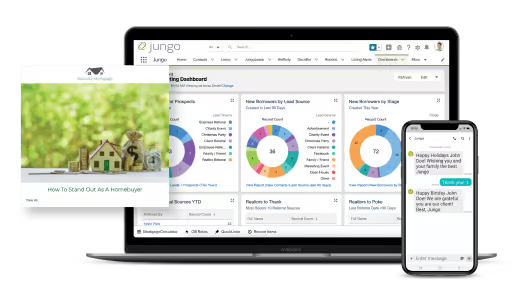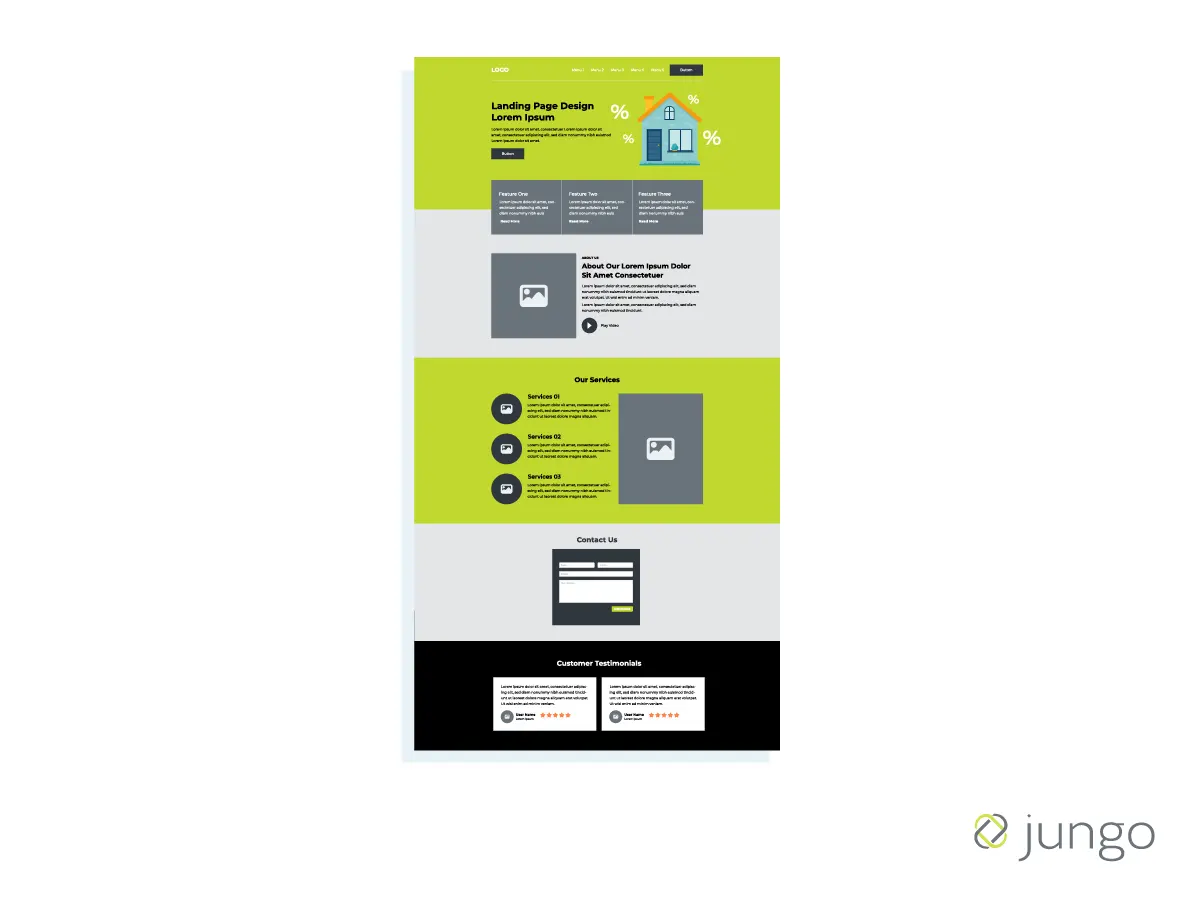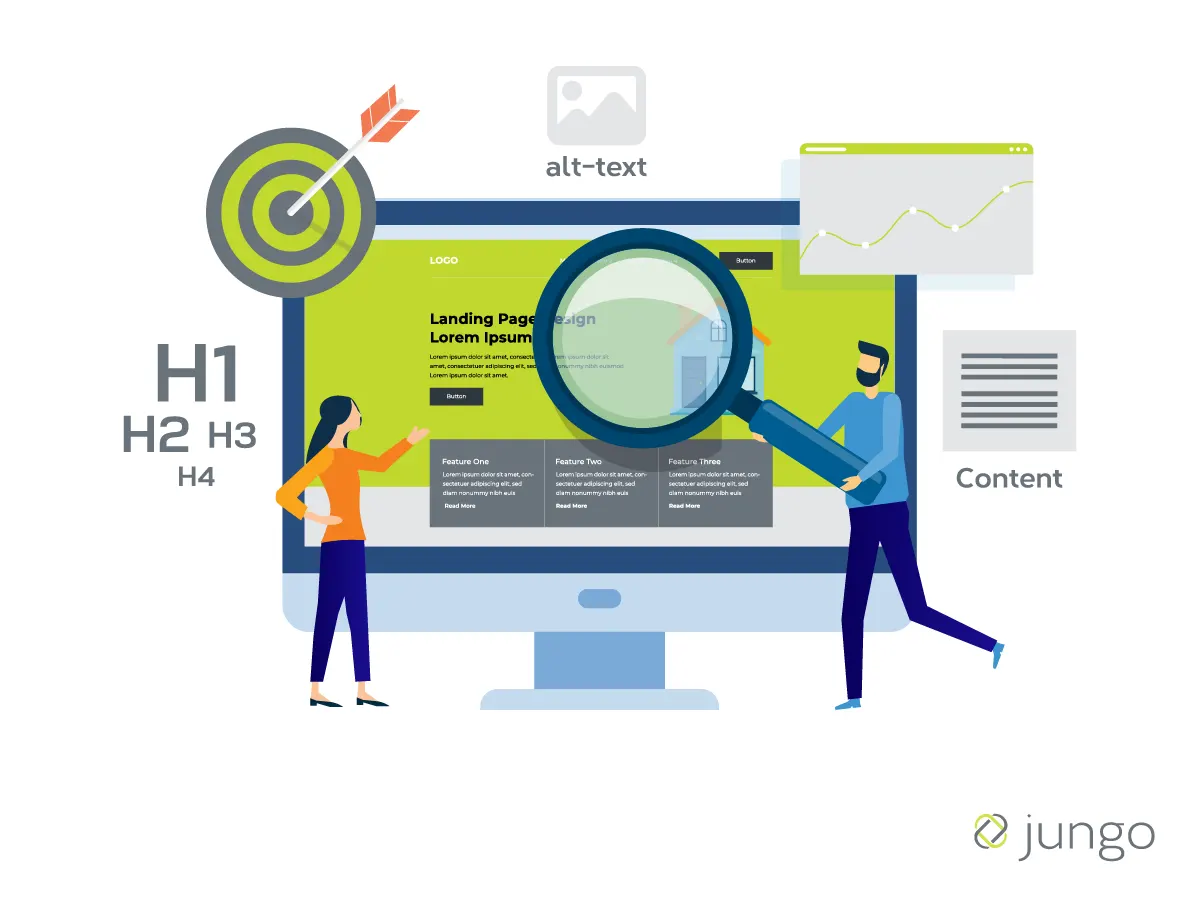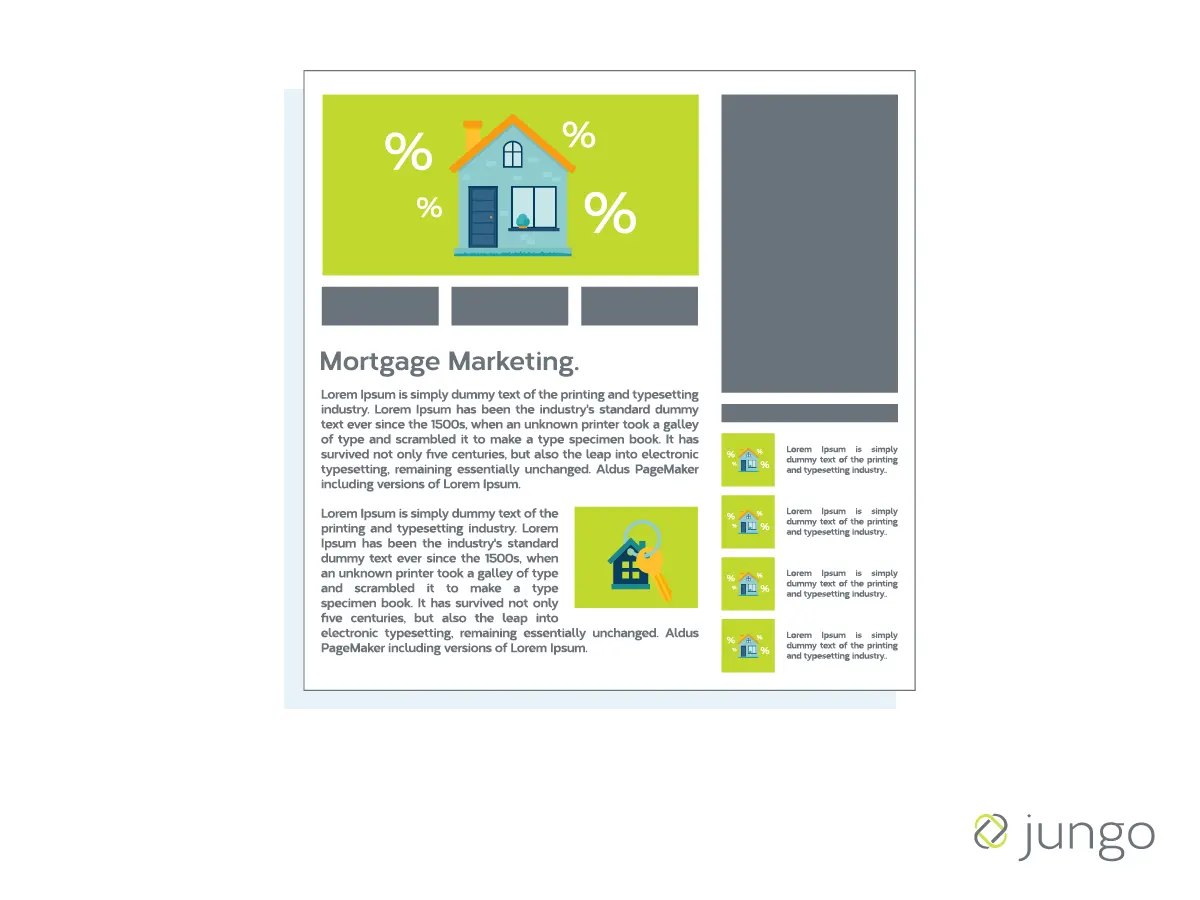Chapter 1
What Is Mortgage Marketing?
Chapter 2
Loan Officer Marketing Plan Template
Chapter 3
Effective Digital Mortgage Marketing Strategies
Chapter 4
Loan Officer & Mortgage Broker SEO Strategies
What Is a Mortgage SEO Strategy?
Benefits of SEO for Mortgage Businesses
How To Improve SEO for Mortgage Businesses
How To QuickStart Your Mortgage SEO Strategy
Optimize Mortgage Website Structure & Layout
Optimize Your Local Search Business Listing
Chapter 5
Loan Officer Marketing to Realtors
When borrowers search for a mortgage lender, many start by heading to Google or another search engine to search for local options. As a result, the mortgage broker or lending company with the best search engine optimization (SEO) strategy will get the highest number of qualified leads. When executed correctly, SEO can help you rank above your competitors without investing in paid ads.
This makes having a solid mortgage broker SEO strategy an essential part of your overall marketing plan. If you’re not focusing on your SEO as a digital marketing strategy, you’re missing out on the opportunity to connect with leads who are actively looking for the services you offer.
In this chapter of the Mortgage Marketing Guide, we will:
- Define mortgage broker SEO strategy
- Explain the business benefits of investing in SEO
- Explore five effective ways to quickstart your mortgage business’s SEO efforts
What Is a Mortgage Broker SEO Strategy?
Search Engine Optimization (SEO) is a strategy you can use to improve the position of your website in organic (non-paid) search results. When your website and its content are properly optimized, search engines like Google, Yahoo, and Bing are more likely to rank it toward the top of the Search Engine Results Page (SERP) for specific targeted keywords.
Since the majority of internet users never make it past the first page of search results, if you’re not ranking near the top of page one, there’s a good chance that you’ll get little – if any – organic website traffic. Mortgage brokers who leverage their SEO marketing strategy can increase their organic search rankings and drive more traffic to their website. This supports lead generation and creates opportunities to convert more leads into closed deals.
What Are the Benefits of SEO for Mortgage Brokers?
Help Potential Clients Find You Through Search
One of the top benefits of having a great home loan company SEO strategy is its ability to help prospects find your business online. Since users are more likely to click on one of the top five listings on a SERP, the higher you rank, the more visibility your business will have online.
Enhance Your Mortgage Firm’s Brand Reputation
Ranking higher in search results will also make your business appear more trustworthy when compared to companies that show up on pages two, three, or lower. Since customers are making a big commitment when choosing a mortgage lender, the additional trust generated by a solid SEO strategy is an essential part of any successful digital mortgage marketing strategy.
Improve Site User Experience By Following SEO Best Practices
When determining where a website should rank, search engines also put a lot of weight on the user experience. A good SEO strategy doesn’t just improve your rankings; it also ensures that your site communicates relevant information about your products and services. When users can easily find what they’re looking for, you’ll have more success converting them into customers.
Floify, one of Jungo’s many LOS integrations, says that, “The localized structure of a loan officer’s business has some inherent advantages in SEO over other consumer industries. First, most non-branded searches in this space will focus on local results, thus immediately reducing competition for rankings. Second, this helps inform the keywords and search terms that a loan originator should focus on.”
How Can I Improve SEO for My Mortgage Business?
While it may seem intimidating initially, you’ll be glad to know that you don’t have to be a technology expert to implement some of the top mortgage broker SEO strategies. Not only is it not as complicated as you may think, but implementing a few simple SEO strategies can often make a significant difference in your company’s site rankings, setting you up to attract more potential customers.
5 Tips to QuickStart Your Mortgage Broker SEO Strategy
Ready to get started? You’re in the right place! Let’s take a look at five of the top things you can do right now to help give your SEO strategy a quick boost.
1. Plan Your Mortgage Website Structure & Layout
Your site structure and layout are vital to your SEO strategy. Not only does your website’s organization impact the user experience, but it also helps search engines determine which pages on your site are most important and, therefore, should rank highest. To ensure you’re ranking high for relevant searches, you’ll want to ensure that you plan your pages around your core business offerings.
Some of the top pages that are typically included in a well-structured website include:
- Product/service pages
- About us
- Contact us
- Customer testimonials
While you may consider adding more pages and information to your site, it’s important not to overcomplicate it. As your site grows, it can get cluttered and confuse visitors and the bots that crawl it. If you have pages that are no longer relevant, such as those that explain products or services you’re no longer offering, consider removing them from your site.
Also, be careful not to bury important information too deep. Generally, it’s best to ensure that users never have to go more than three clicks away from your homepage to find the information they need. As you’re evaluating your website, remember that many internet users are impatient and have a short attention span. If you make it difficult for them to find what they’re looking for, they’ll simply click away and move on to another mortgage broker’s site, causing you to lose out on a potential conversion opportunity.
2. Learn Elements of On-Page SEO
On-page SEO focuses on building search-engine-friendly website content to help improve your rankings. There are various ways to show search engines exactly what each webpage is about, and keyword research is one of the most important.
Keywords are specific words or phrases users type into a search engine to find what they’re looking for. Incorporating the right keywords into your website content will increase the chances that your site will appear in front of relevant leads.
Long-tail keywords are phrases that include three or more words. They’re often an excellent choice since they make targeting a user’s “search intent” easier, which can help drive more qualified traffic to your site.
By doing some keyword research, you’ll better understand the search terms and phrases homebuyers typically use to find the services you offer. Once you have a list of relevant keywords and key phrases, you can optimize your site by including them in each of the following locations.
- Page titles– this helps search engines determine the topic of your webpage and distinguish one page from another. Your page title should be between 30 and 60 characters in length to appear in search results without being truncated.
- Meta descriptions– provide a brief summary of the page and can entice users to click through. Search engines often add bolded keywords from the query to the description display, helping attract the searcher’s attention. Your meta descriptions should be between 50 and 160 characters in length to appear in search results without being truncated.
- Image alt-text– this is primarily to help visually impaired users understand on-page images. Adding alt-text can improve the user experience. By including a keyword, you can also take advantage of another opportunity to show the search engine what the page is all about.
- Headings– adding important keywords to your headings makes it easier for search engines and readers to scan your page and understand the key points quickly.
- Content– incorporating keywords into your content helps search engines further understand what the page is about. It can also help them determine how to rank the page compared to other pages with similar keywords.
When adding keywords to your site, it’s important to do it in a way that feels natural. Over-using keywords, also known as “keyword stuffing,” will hurt your site rankings. Search engines aren’t easy to outsmart and place significant value on the user experience. Always make that your top priority, and you’ll stay in their good graces.
3. Create Blog Content to Drive Qualified Traffic
Creating and maintaining an active blog is one of the top ways to incorporate relevant keywords into your website, but there are many other benefits. You can use your blog to develop content that provides answers to questions your potential clients may be searching for. This can help you establish yourself as an authoritative resource in the mortgage lending industry. Even if the searcher isn’t looking for a lender at that moment, they’re more likely to reach out to you when they need your services.
Creating and distributing valuable content can also allow you to reach out to current and prospective clients. By sending a useful blog post, you’ll be able to make contact in a way that doesn’t feel like a sales pitch. This will allow you to build rapport and nurture your relationship, increasing the likelihood that they will return to you when the time is right.
Marketing to Realtors is also easier when you can serve as a valuable resource for them and their clients. Try to occasionally cover topics that are useful to real estate professionals and use the opportunity to keep in touch with them.
Creating blog content consistently can boost your SEO by continually giving search engines fresh content to crawl. An example is Jungo’s mortgage blog, where fresh and relevant content is posted consistently, and with the audience in mind.
In addition, blog content creates opportunities for you to add internal links to other pages, further helping search engines understand the layout of your site, so you can rank higher. If you’re lucky enough to have another website link to your content, the backlink will add credibility to your site, further improving its rankings.
4. Optimize Your Business for Local Search
Many home buyers prefer to work with a local mortgage broker or lending company. It’s important to claim and optimize your Google Business Profile (formerly Google My Business) to ensure your business appears in local searches. Whether you have multiple mortgage business locations or just one, your Google Business Profile is one of the most important parts of your local SEO strategy.
This free business listing offered by Google allows you to provide essential details about your business and helps you rank on Google Maps, Google Search, and more. Claiming and setting up your page is a reasonably straightforward process. While there’s a lot you can do to optimize it, at minimum, add all your contact information, including the phone number, physical address, and hours of operation for each location.
You can also leverage your social media efforts to create brand awareness among your local followers. Start by actively posting on the social media platforms that your target audience is most likely to use. As you get engagement from your followers, be sure to take the time to interact with them. This helps show that there are actual people behind your brand and allows you to build personal relationships with your followers.
Social media followers represent a pool of potential customers and an opportunity to convert them into brand ambassadors who are willing to leave reviews, share your social media posts, or even recommend your business to family and friends.
5. Develop a User-Friendly Contact Form
A great website and a spot-on SEO strategy will only get you so far if potential clients aren’t motivated to take the next step or can’t easily reach you. Every successful loan officer marketing plan includes clear calls-to-action (CTA).
When building your website, make sure there’s CTA on each page and that it’s easy to get to your contact forms. Be careful not to ask for too much information or make the forms too complex. Instead, make sure they are easy to complete and submit. Focus on gathering basic contact information; you can always follow up later to collect any additional information you need.
Bottom Line
Let’s recap the main takeaways from this chapter:
- A mortgage broker SEO strategy helps your website rank higher in search engine results to help prospects find your services.
- The main benefits of investing in an SEO strategy include increased traffic to your site, where you can convert visitors into leads, enhancing your mortgage business’s reputation through an authoritative online presence, and improved user experience on your website.
- Five ways to improve your SEO include optimizing your mortgage website to showcase your core offerings and help users find the information they are looking for, optimizing your on-page content for keyword targeting, developing valuable blog resources to establish yourself as an industry thought leader, optimizing your Google Business listing, and ensuring the contact form on your website is optimized for conversion.
In Chapter 5, we will switch gears to discuss how you can leverage relationships with realtors to gain access to a larger pool of prospects and earn more client referrals.
Previous
Chapter 3
Effective Digital Mortgage Marketing Strategies
Next
Chapter 5
Loan Officer Marketing to Realtors








